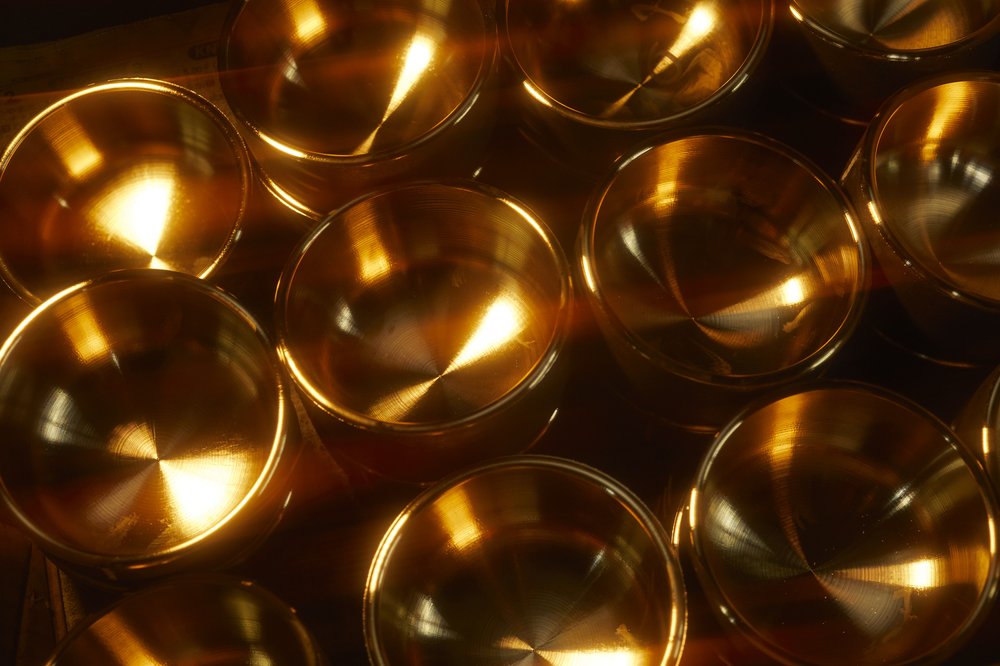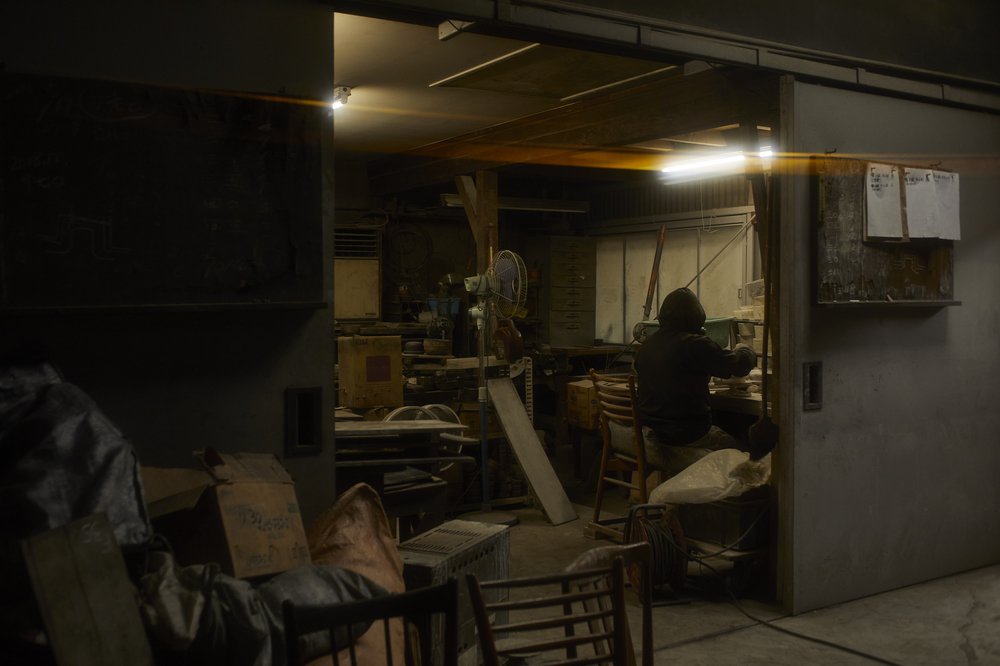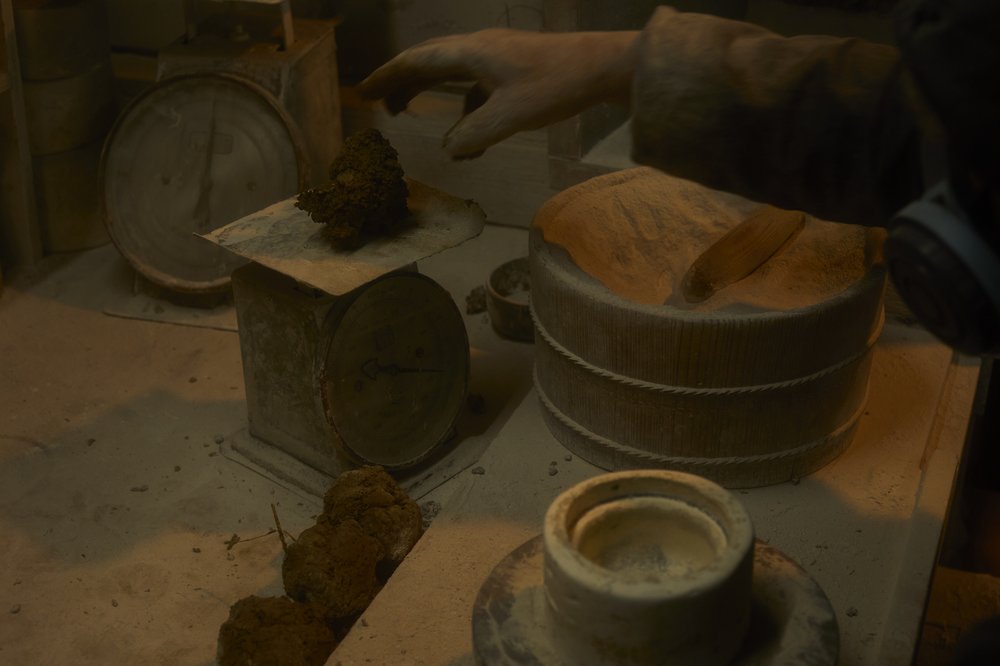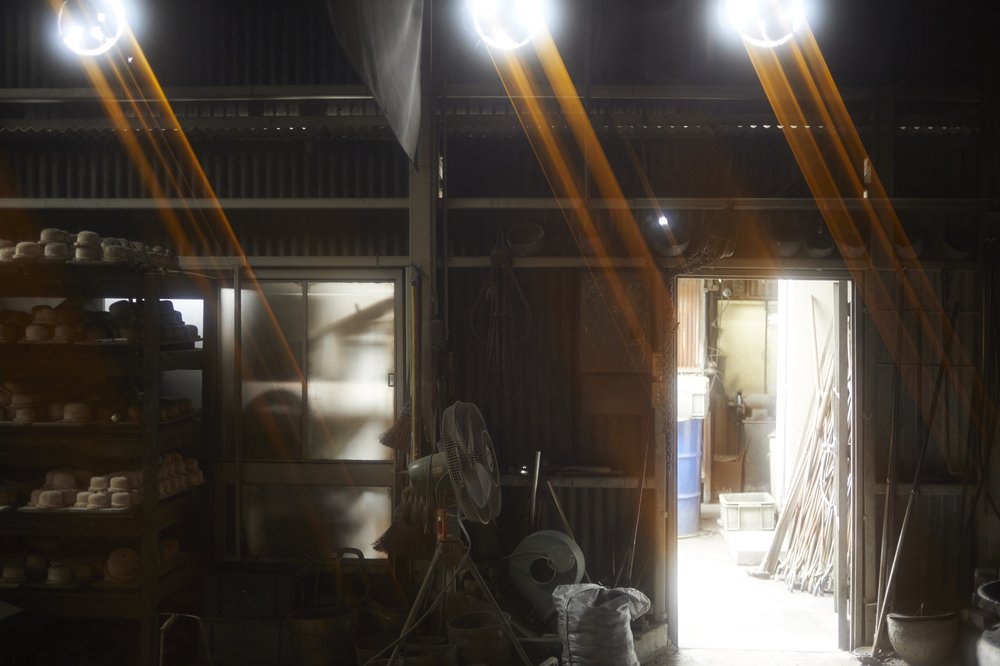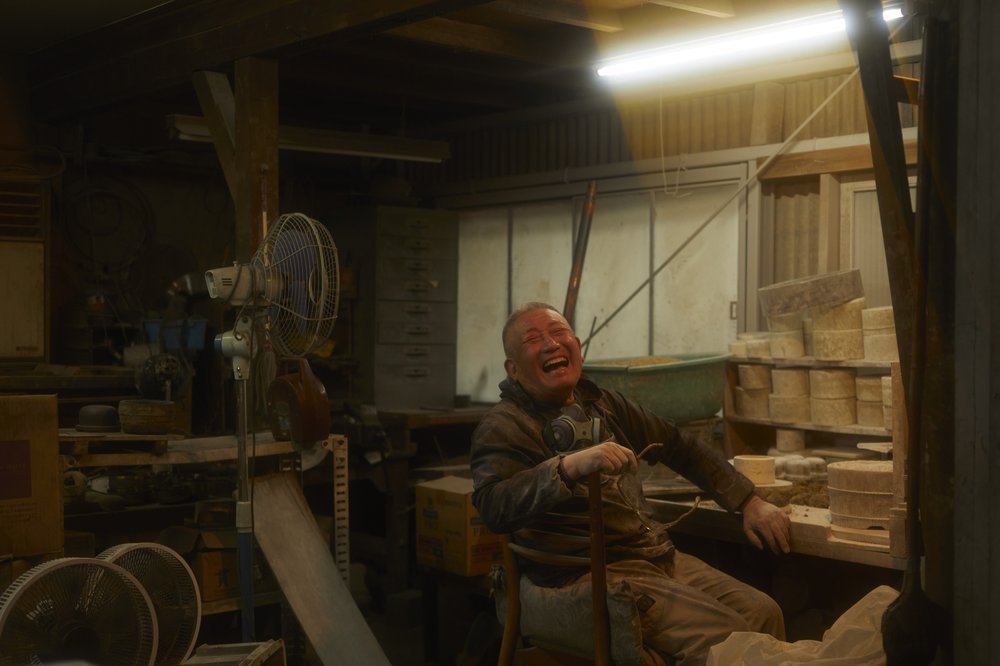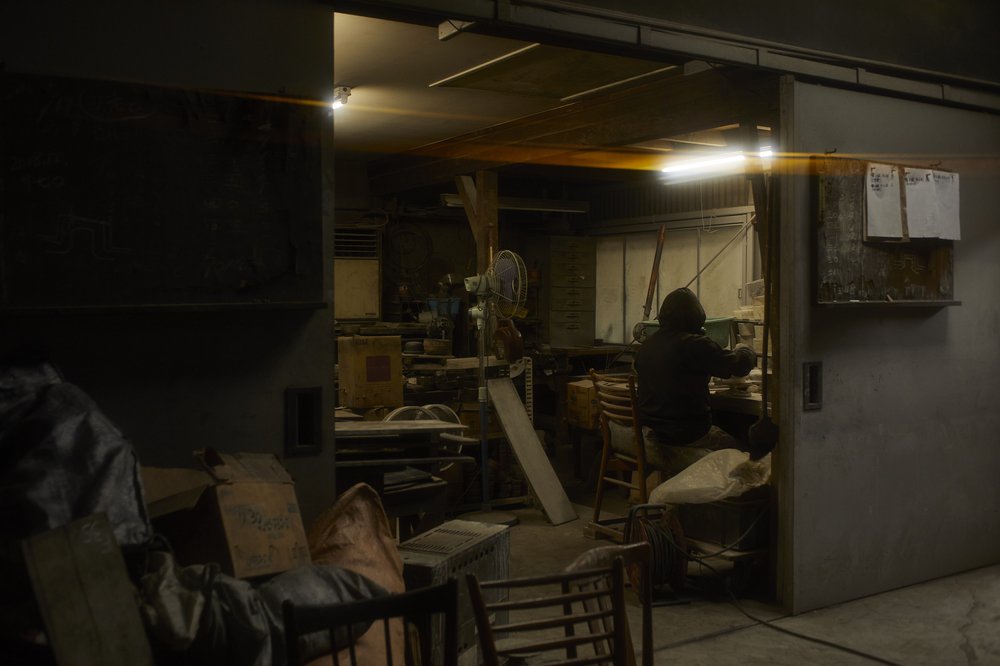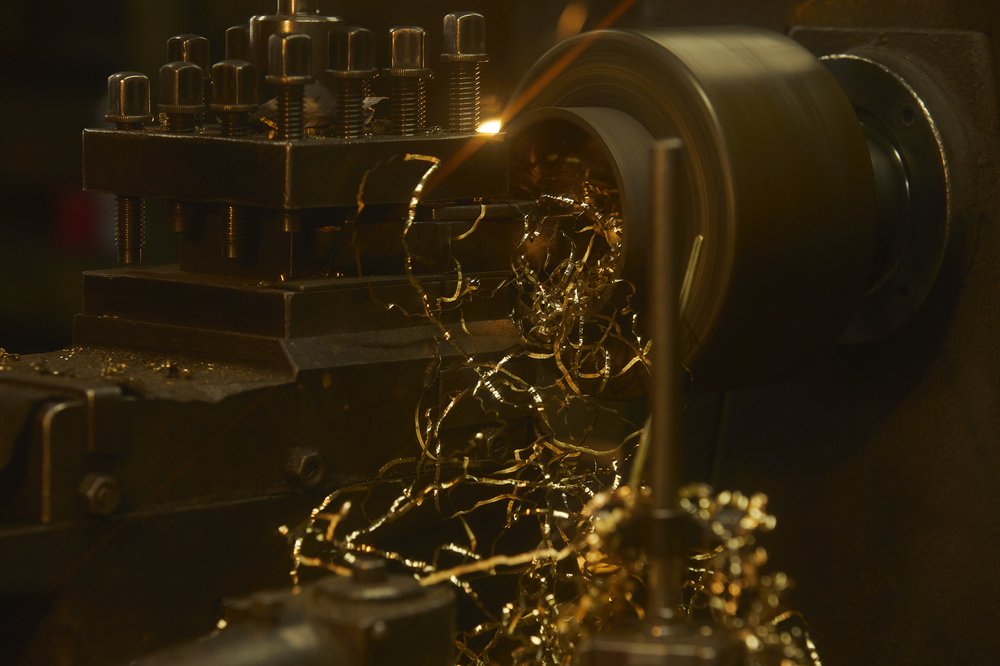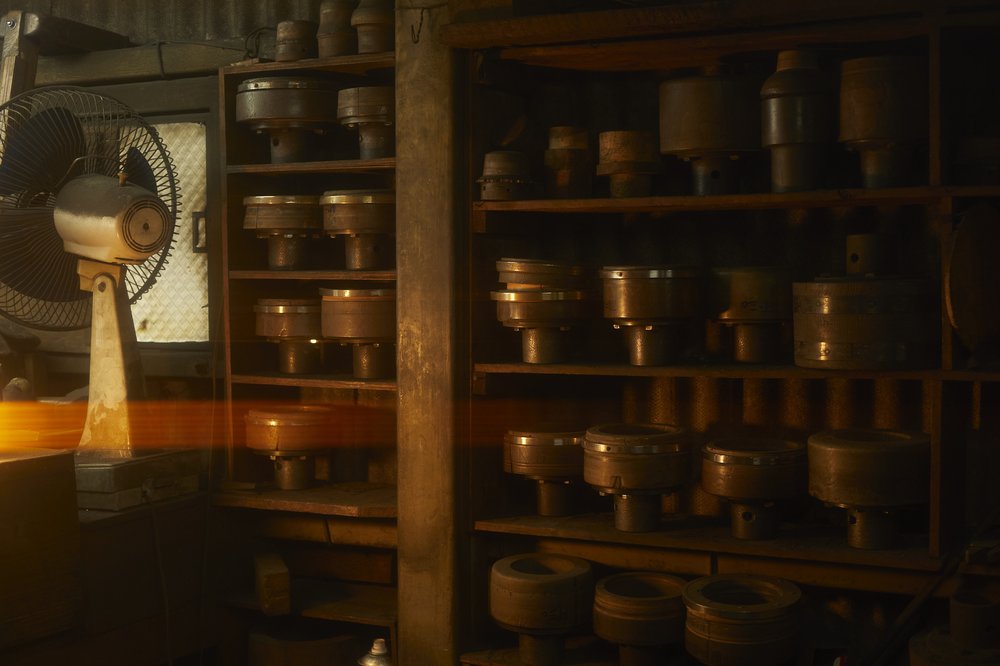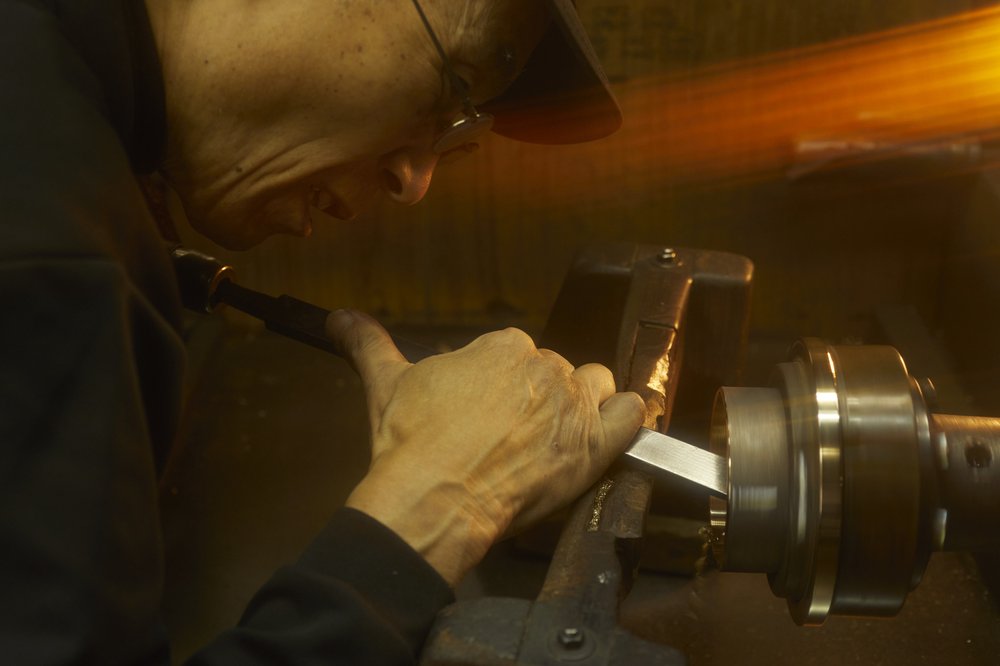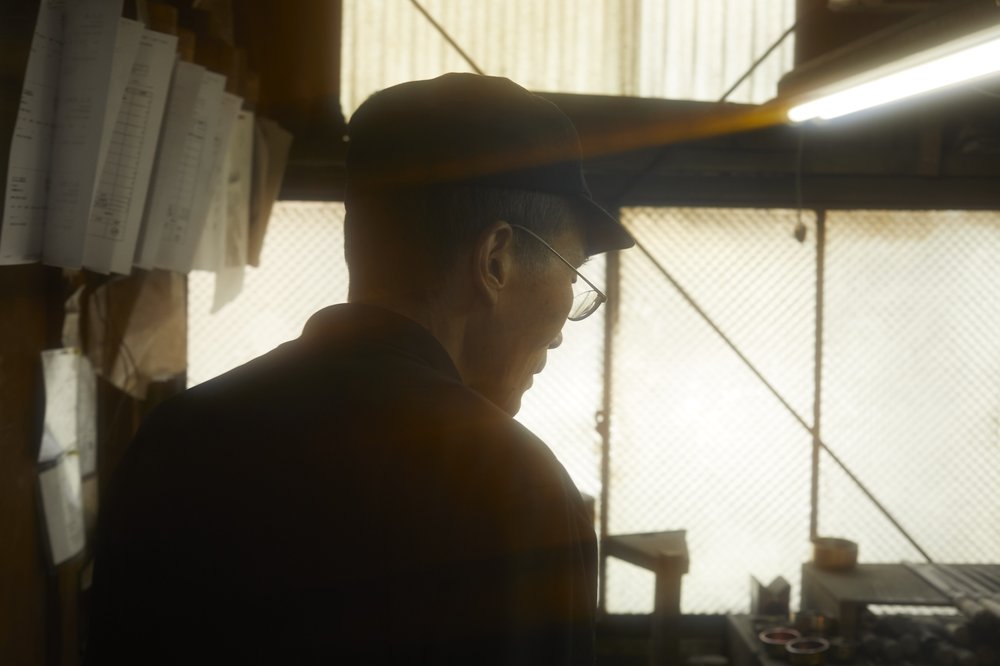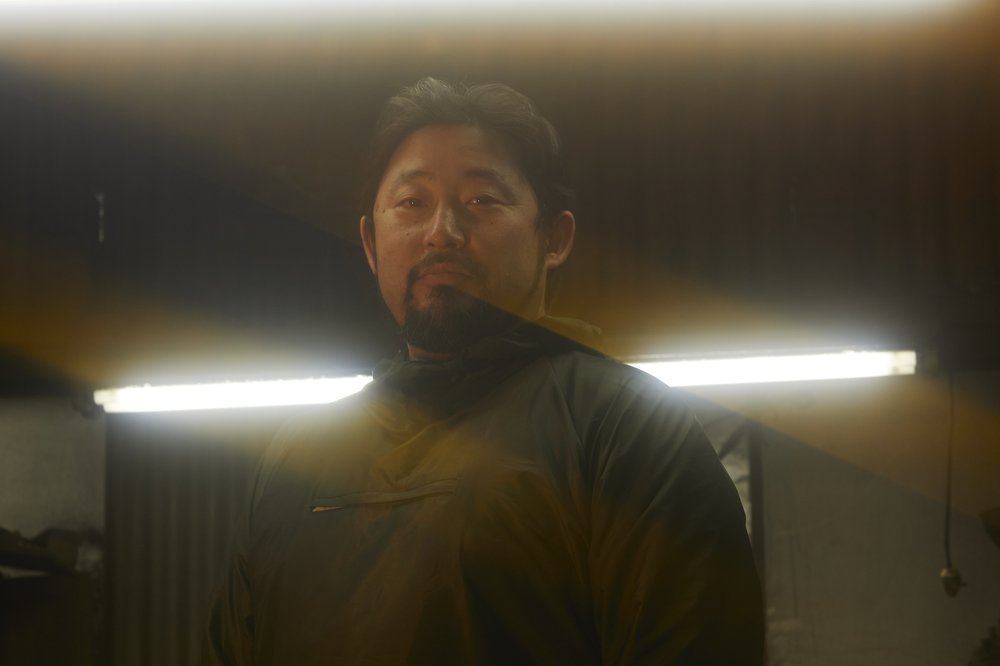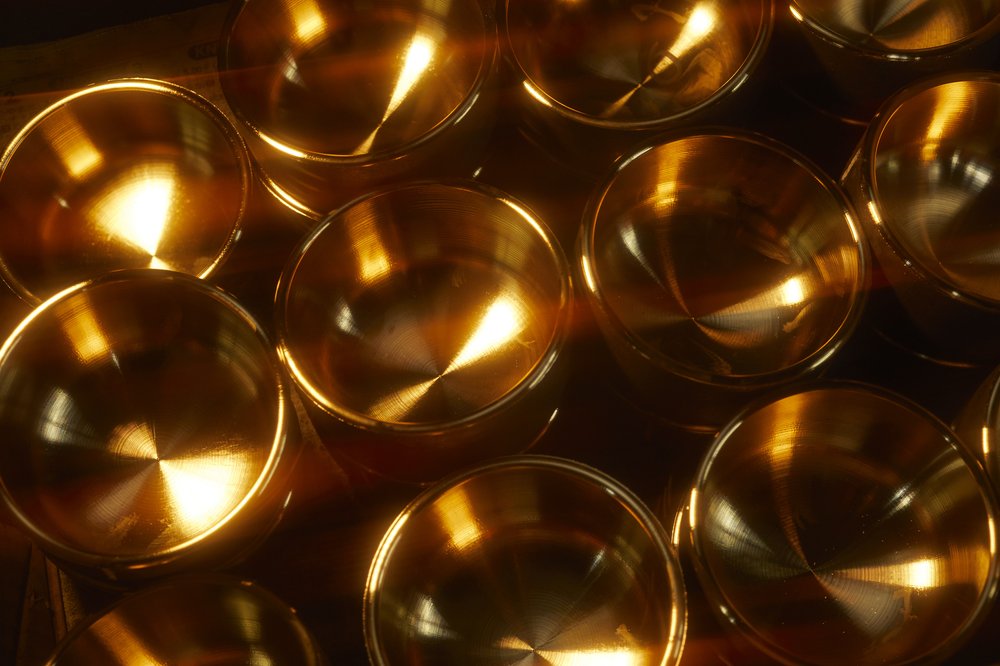When visiting Kyōto, it is almost impossible to escape the ringing harmony of Japanese spirituality echoing from any number of temples and shrines. And, since the final days of Medieval Japan, the Nanjō Kōbō Foundry has taken part in the creation of traditional musical instruments intended for use in Shintō and Buddhist rites, rituals, and celebrations. In particular, the fruit of their specialized work are bells known to ring out with an unparalleled purity and clarity, unaffected by flaws or undulations in timbre. These works of art are the result of incredible skill that has been honed over generations which utilizes a special dual-metal alloy known as “sahari.”
Originally established in 1839 near the well-known Fushimi-Inari Shrine located in southeast Kyōto, the shop was moved shortly after the conclusion of the Pacific War for fear of fires that might come from the active use of wood-burning kilns. Since the move, the workshop has been operating from a relatively new location in Uji yet still adheres to techniques that have been preserved as a trade secret for nearly 200 years.
Generations of Perfection
It takes a lot of work to craft the workshop’s trademark bells capable of producing such a solid timbre and the first step begins with creating the right mold. Using a mixture of earth, clay, and rice husks to form the mold, this initial step is of great importance as if not done correctly gasses will be trapped during the alloy casting which will distort the shape and sound of the final product. During this stage it is also necessary to carefully maintain and monitor the temperature otherwise the work will prove to be all for nothing and the molds and flawed bell will have to be recycled and the process forced to begin again in the pursuit of perfection.
In order to obtain a consistent quality of sound, the Nanjō Foundry produces its own metal alloy onsite according to a method and recipe that dates all the way back to the workshop’s founding in 1839, making this foundry one of the few in Japan to enjoy such a direct and unbroken link to past methods. Passed down throughout generations, this mixture is known as “sahari” and is an alloy of copper and tin unique to the foundry.
Once this alloy is prepared, it is manually cast at just the right temperature to ensure even cooling of the final product. Once sufficiently cooled, the molds are broken and the “orins,” or “singing bowls,” are extracted and inspected for shape, form, and tone. Any not conforming to the foundry’s strict standards will be recycled as will the molds and all materials will be reused so that nothing goes to waste during the production process. And in order to achieve the best possible sound it is not unheard of that these fresh singing bowls may be recast dozens of times in pursuit of a sound that will not only appeal to Buddhas, Bodhisattvas, the Kami (the native gods of Japan) but also to the discerning ears of demanding musicians.
Sacred Sounds for All
As works intended for religious use, these singing bowls could not traditionally be sold directly to the greater populace and instead would be sold wholesale to those specializing in the trade of religious goods across Japan. It is from these larger wholesalers that the bells would end up before temple altars or on certain parade floats during Kyōto’s famous “Gion Masturi” festival.
However, in 2019, the Nanjō Kōbō Foundry launched its “LinNe” brand with the explicit goal of sharing their products with as many people as possible and which has succeeded in attracting the attention of certain artists through their unique sound, high quality, and rich history. Below, we invite you to view one such artist, Samuel André, demonstrate the sounds that these singing bowls are capable of producing.
Written by H.Sapochak
Photos by Samuel Guigues
If you also find yourself intrigued by these exceptional works of craftsmanship, please feel free to visit our boutique and for more information please contact us at info@unjapan.jp
The Nanjō Kōbō foundry has been kind enough to open its doors to UNJAPAN, so for a rare chance to learn more about the production process of these bells please feel free to check-out our video below. If you like this format, we would love it if you would subscribe to our YouTube Channel. And a like and a comment would certainly help us to keep bringing you the best that Kyōto has to offer.
Creation of Spiritual Sound of Japan - Nanjo Kobo Foundry (FR & ENG subs)
Kyoto, in a Zen temple lives the French artist, Samuel André (Activate Eng sub)
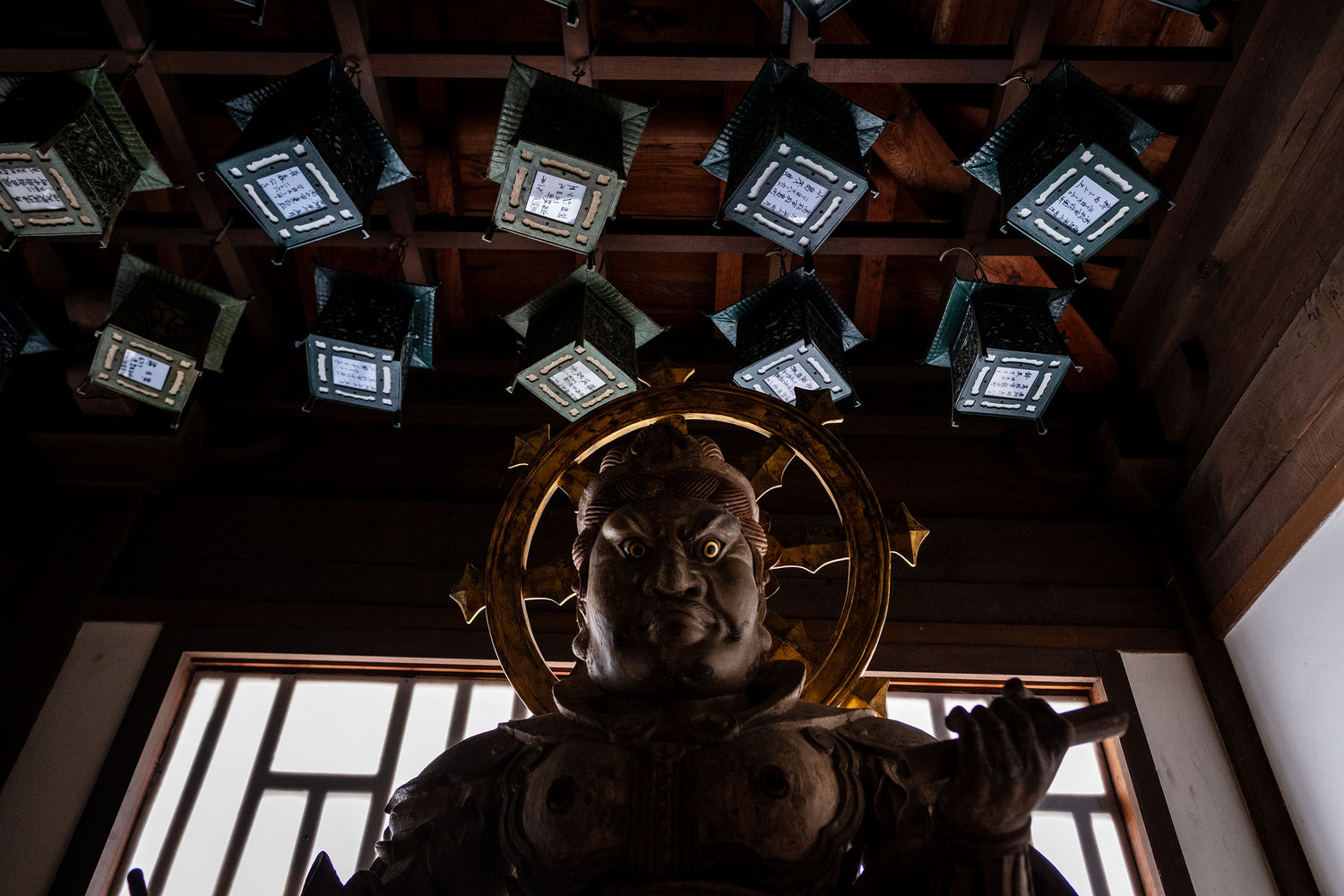
Hōnenji: Temple of Living Buddha Mountain
The town of Busshōzan seems to rise from the surrounding fields in an almost casual kind of way and the meandering Shōwa Era streets and alleys stand in some sort of juxtaposition to the concrete-framed corporate culture of Takamatsu City to the north. Literally meaning, “Living Buddha Mountain” the town might be forgotten were it not for the popular Busshōzan Onsen which opened only as recently as 2005.
In partnership with Discover Shikoku!
-
 Disover Shikoku
Disover ShikokuWelcome to Japan's most creative and bespoke travel experience, Discover Shikoku! We are a regional destination management company covering the mystical island of Shikoku, the Seto Inland Sea, and the coastal regions which surround it. If you're in search of a one-of-a-kind handcrafted travel experience fully tailored to your expectations then welcome home... We've got just what you're looking for.

